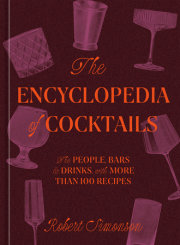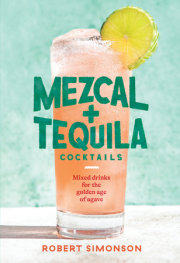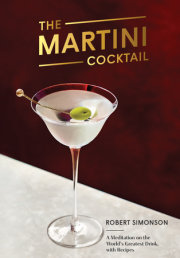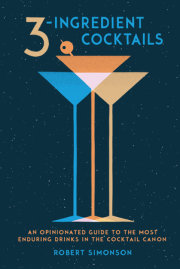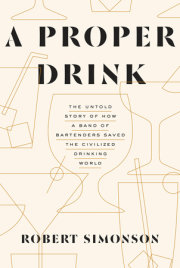Preface “I never treated it as just a cocktail.”
—Doris Simonson
My mother never drank liquor until she was twenty-one. She followed the rules. But when she embarked on what would become a long drinking life, she did so with purpose and not a little forethought.
The first order of business was to find her drink. In those post–World War II days, when the cocktail hour was as inviolable a part of any day as sunrise and sunset, one had one’s drink. There was none of this flitting about from cocktail to cocktail. You found a mix that delighted the palate and soothed the mind in the right proportions and stuck by it.
She began with Manhattans. She liked the way they looked, shining like liquid embers inside a long-stemmed glass. But, after a while, they gave her headaches, which she blamed on the sweet vermouth. (Vermouth is ever the scapegoat.) She then tried Martinis, but found them daunting and dangerous. Finally, she found her level in the Old-Fashioned. Some of her reasoning was spurious. She’d ask for as much accompanying fruit as the bar could furnish as well as a healthy spurt of soda water, because, “even in those days, watching your weight was important.” But the remainder of her logic is hard to fault.
“A lot depends on why you’re having an Old-Fashioned,” she said, some sixty years after she sampled her first. “If you’re having one as a drink in the evening, you’d probably rather have a strong one, because you’re not going to have two Old-Fashioneds. If you’re at somebody’s home or visiting with people, it’s never just a cocktail. I never treated it as just a cocktail. To me, a cocktail was an avenue to socializing. Everyone did it. It was something we did while we were visiting and laughing and singing and talking. It was a tool to meet people and relax.
“I treated it as an all-purpose drink. I never went through this thing where you say, ‘Oh, it’s before dinner, so we need a before-dinner drink; or, it’s dinner, so we want something light; or it’s after dinner, etc.’ It was something I enjoyed drinking, and I could control what I wanted by telling the bartender not to put too much liquor in it, or to put a lot of fruit in it. You could almost make up the recipe for your Old-Fashioned.
“You find people’s personalities coming out in Old-Fashioneds. A lot of men will drink Old-Fashioneds, but they will tell the bartender, in no uncertain terms, ‘Very little, if anything, mixed in.’ Mostly, it turned out what they wanted was a bourbon on the rocks. They basically wanted a nice strong drink with plenty of ice cubes, so as it sat there it became a little more mellow. Whereas women basically wanted all the things that went with it.”
“And,” she concluded, “it’s so beautiful to look at.”
------------------
Col. Jim Gray’s
OLD-FASHIONED WHISKEY COCKTAIL
New York Sun, 1908
“Colonel” Jim Gray enjoyed a thirty-year tenure behind the bar at New York’s Fifth Avenue Hotel. He contended that he had served the Old-Fashioned Whiskey Cocktail since 1881 and had, in fact, invented it. This is the recipe given to a
New York Sun reporter in 1908 by Colonel Gray himself. This formula is patently
not an Old-Fashioned, what with the lack of bitters and lemon peel and the presence of nutmeg. Most likely, the reporter mistakenly applied the name to the recipe for a Whiskey Toddy, another drink for which Gray was famous. Indeed, several bartenders wrote to the
Sun protesting that Gray must have been misquoted. Nonetheless, this is the recipe we have. And, taken as such, it’s actually an excellent drink. The recipe below is adapted from Gray’s instructions to the
Sun.
2 ounces bourbon or rye
1 sugar cube
Dash of nutmeg
Muddle the sugar cube, a barspoon of water, and a sprinkle of nutmeg in a mixing glass. Add the whiskey and ice. Attach tin to top of glass and shake the drink. Strain the drink into an Old-Fashioned glass. Dust with nutmeg. “And, for heavens sake,” as the Colonel said, “no bitters.”
Copyright © 2014 by Robert Simonson. All rights reserved. No part of this excerpt may be reproduced or reprinted without permission in writing from the publisher.










